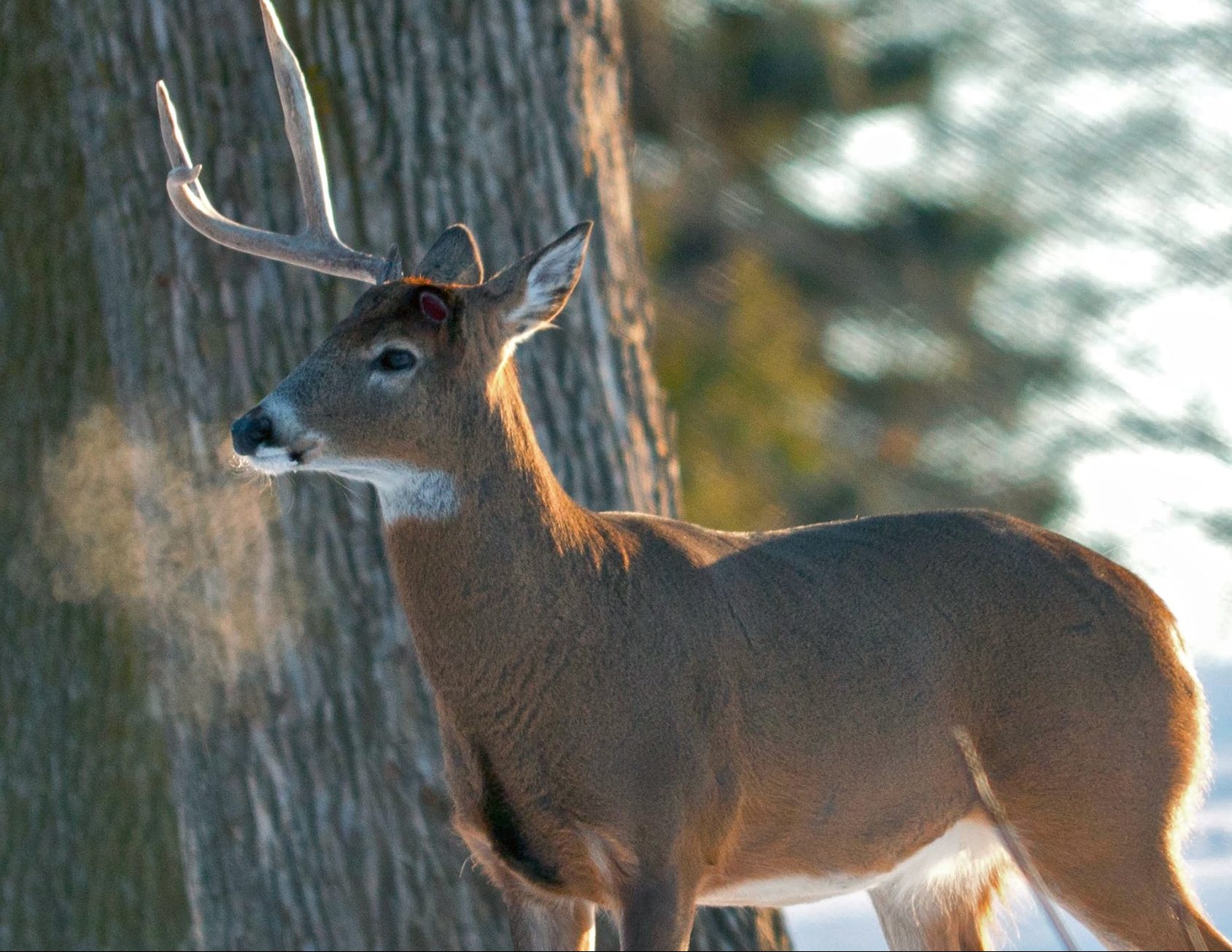I get the concept, but I also understand the science. I’ll admit, there was a time when I believed that an antler trap was the only thing between me and a pile of sheds. Though I believed it, the furthest my innovations ever went were a few bungie straps strung across a feeder. Looking back at what I know now, I sure am glad I never spent much time building such “rack traps”. Before I get into why antler traps don’t work like magic, let’s take a look at some of the designs that scour hunting forums across the internet.

While the ingenuity and conceptual designs of some ‘rack traps’ are impressive, the science behind shedding antlers tells a different story.
While the visuals of some of these masterpieces offer a good laugh, the point should be made that many of these can endanger a deer’s life. If you still want to make an antler trap, I would advise you stay away from fencing and chain-like traps and steer more towards stationary traps like clusters of trees or posts, which are much safer for a deer.
Now onto the actual physiological processes that control the antler shedding process. It’s a relatively simple process to understand – photoperiod (amount of daylight) signals changes in testosterone levels, which control antler growing, hardening, and casting periods. Other factors may also influence an individual’s testosterone levels during any given day, month or year, which is why some bucks shed earlier or later than usual. Stressful circumstances such as injuries, fighting, poor nutrition and severe winters can often lead to an early suppression of testosterone levels, thus an earlier antler drop.

Antlers usually fall off within hours of testosterone levels falling below the antler threshold level, which is why so many sets are found within a couple hundred yards of each other. With that understanding, should also come the acknowledgement that antlers do not need to be bumped or caught on something to fall off.

Above is a very simplistic and general interpretation of how the level of testosterone in a buck signals different antler phases.
Shed hunting efforts should be focused on where deer spend the most time during the winter, not where they are likely to be jarred loose. Deer often change their habits dramatically once the cold temps and snow move in. It’s all about high energy foods and thermal regulation. Some properties go vacant, while others house ten times as many deer than they did during the fall.

Three of us found 5 sheds within ten minutes of each other in this cut corn field. This matched set was the smallest of the bunch.
Feeding areas should be your go-to #1 shed searching spots, with bedding areas a very close second. These are simply the areas deer spend the most time, therefore are the most likely places where sheds will fall off…it’s all about probability. Checking trails between bedding and food is the third best option, and should certainly not be overlooked. Like I said, shed hunting is all about probabilities: the more time you spend searching, the better your odds of finding some bone – generally speaking. The more time spent searching QUALITY areas, the further your odds increase.

Now back to antler traps and why they do not work like magic. Hopefully the aforementioned “science” paragraphs have already planted the seed as to why they don’t work as well as you may think. One of the biggest misconceptions people have about antlers is that they slowly loosen like when a kid loses a tooth. This is not how antlers fall off! They do not loosen, but rather give way almost instantaneously. Bucks can be in a knock-down-drag-out fight one minute and lose their headgear later that day. Now if they so-called slowly loosened, those antlers would of torn off and a lot of bleeding would have incurred. That is not the case. Rather, as a result of losing the fight, the loser’s testosterone level dropped below the threshold and sheds his antlers shortly after.

This big guy just dropped one of his antlers and will likely cast the other one very soon, especially being that big.
The reason you may see an antler trap “work” from time to time is the simple fact that the antler was ready to fall off when it came to the bait site. It goes back to probability…if you have a corn pile out, deer are likely to spend a fair amount of time eating there, thus an increased chance of casting a shed at the bait site. That shed was going to fall off in the very near vicinity, regardless of the entangling antler trap. It would be my guess that so-called “antler traps” appear to be more effective in areas where baiting is unrestricted and where there is very little natural food around. Why? Because these are the areas where deer will be spending the most time at one particular bait site, thus an increased probability of dropping an antler.

Look close, there are two sheds in this picture. This is a prime example of what you may find in bedding areas.
As a biased biologist, I’ll stick to my ‘walking quality areas’ method until someone can disprove the science and show me proof that these things work. Again, MILES + QUALITY AREAS = SHED MASTER!
Good luck to all you legendary bone collectors out there this shed season!







